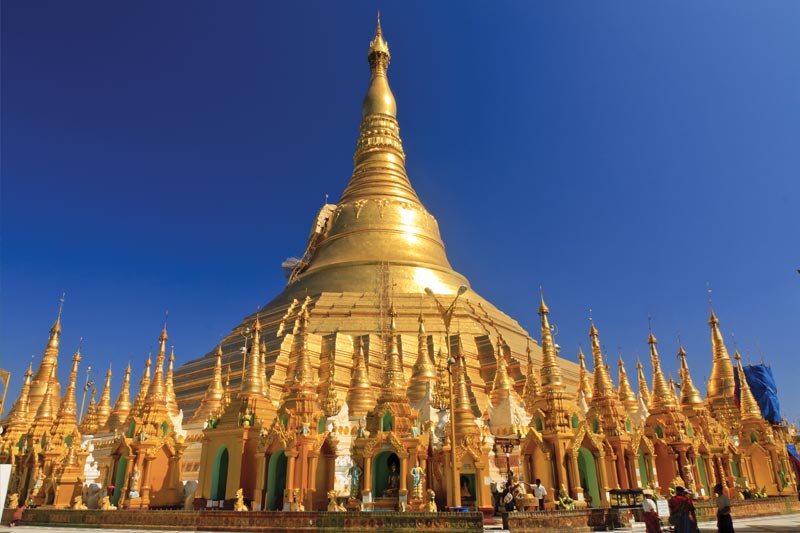Bago is situated about 80 km away from Yangon and about two hour drive from Yangon Airport. It has a population of Bago was founded in AD 573, as a royal capital called “Hanthawady”, by two Mon princes from Thaton. And it was also famous as the capital of Second Myanmar Empire where one of the nation’s heroes King BayintNaung, built Kanbawzathadi Palace, between 1551 and 1581.
Numerous wars raged between the 16th and 18th century, which eventually resulted in the city’s demise. Nowadays it is almost impossible to get a true sense of its former glory, but it does retain an impressive hoard of Buddhist monuments whose scale and splendour evoke the glory days of the Mon Kingdom.
Besides its 55-metre-long reclining Buddha image (Shwe Maw Daw Pagoda), Bago is renowned for other religious monuments like the old ordination hall built by king Dhammazedi. Before entering the city, the sites of paddy fields and water buffaloes ploughing these fields will give you an experience of authentic rural life.
The main attraction in Pyin Oo Lwin is the Kandawgyi Gardens, which was established in 1915 by a British forester and spans more than 177 hectres. Allow a few hours here to walk around and appreciate the gardens, with its 500 plus species of trees, 70 types of bamboo and more than 300 orchid varieties. There is also a splendid aviary and an extensive display of petrified wood.
On the outskirts of town are the Anisakan and Pwe Kauk Falls. These two waterfalls are popular picnic spots for local families and a nice place to get some fresh air. As well, there are several small Shan villages surrounding Pyin Oo Lwin where you can see the traditional ways of life of this hill tribe group.
Pyin Oo Lwin, a good place for shopping of regional souvenirs such as knitted sweaters, wine, strawberry jams, is also famous for its plentiful fresh fruits. It is a popular stopping point on the way to the north Burma Road where Hsipaw and Kyauk Me towns are located. However it also makes for a pleasant overnight trip from Mandalay.

